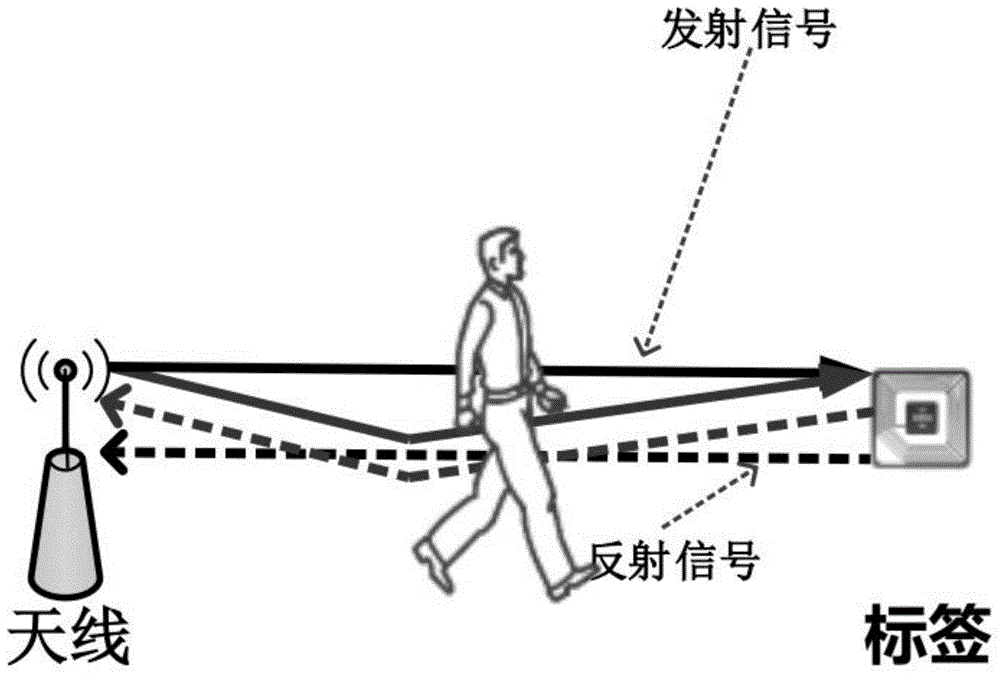RFID-based multi-target passive-type indoor activity identification method
An activity recognition and passive technology, applied in the direction of cooperative devices, instruments, computer parts, etc., can solve the problems of not cheap equipment, poor accuracy, and unsatisfactory accuracy
- Summary
- Abstract
- Description
- Claims
- Application Information
AI Technical Summary
Problems solved by technology
Method used
Image
Examples
Embodiment
[0153] Two general-purpose RFID systems are used to complete the test in the communications laboratory of the School of Information Science and Technology of Northwestern University. There are multiple tables and chairs, desktop computers, and communications equipment in the laboratory. The indoor environment is more complicated. In this experiment, there are a total of three different experiments to verify the effectiveness, robustness, and advantages of the present invention compared with other methods. Each experiment has a different experimental scenario, completed by 7 volunteers, and lasted. In 14 hours, 1054400 pieces of data were collected.
[0154] This embodiment adopts the first scenario of Experiment 1. In scenario 1, a 5*5 label matrix is formed by 25 RFID tags, and the interval between each pair of labels is 1.2m, thereby forming a monitoring area of 480cm*480cm. Two RFID readers and their corresponding antenna arrays are placed on adjacent sides of the monitori...
PUM
 Login to View More
Login to View More Abstract
Description
Claims
Application Information
 Login to View More
Login to View More - R&D
- Intellectual Property
- Life Sciences
- Materials
- Tech Scout
- Unparalleled Data Quality
- Higher Quality Content
- 60% Fewer Hallucinations
Browse by: Latest US Patents, China's latest patents, Technical Efficacy Thesaurus, Application Domain, Technology Topic, Popular Technical Reports.
© 2025 PatSnap. All rights reserved.Legal|Privacy policy|Modern Slavery Act Transparency Statement|Sitemap|About US| Contact US: help@patsnap.com



